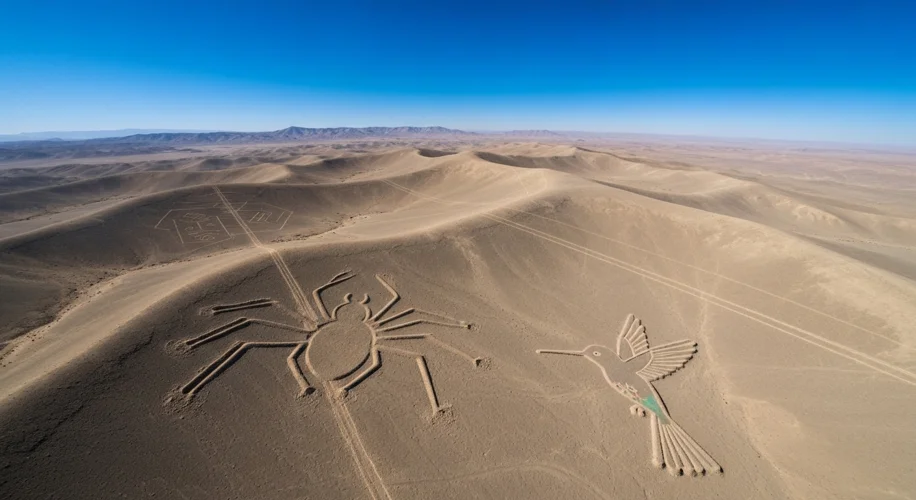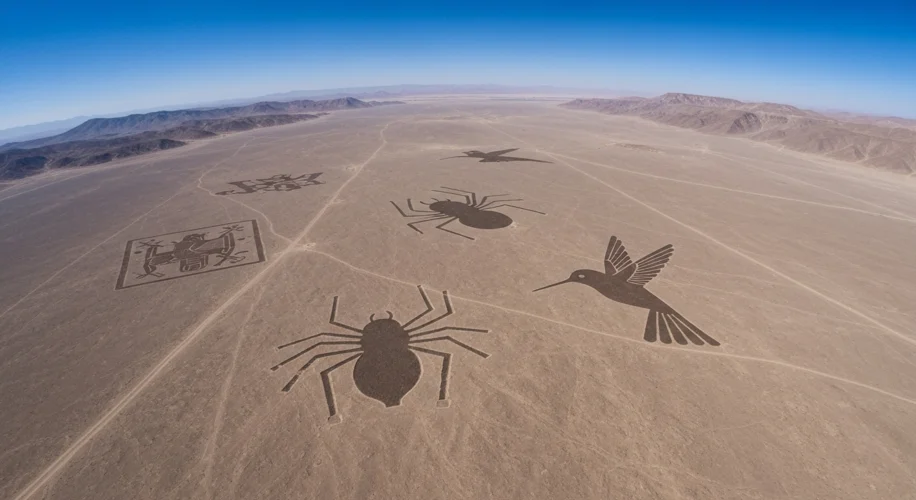The vast, arid plains of Peru’s Nazca Desert hold secrets etched into the earth itself, ancient geoglyphs so immense they can only be fully appreciated from the heavens. For centuries, these colossal figures – spiders, hummingbirds, monkeys, and intricate geometric patterns – have baffled archaeologists, scientists, and travelers alike. What compelled a civilization, long vanished, to dedicate such monumental effort to creations invisible from the ground?
The Nazca culture flourished in this harsh environment between 200 BCE and 600 CE, a time when sophisticated irrigation systems were developed to coax life from the desert. Yet, despite their ingenuity in survival, their most enduring legacy is one of seemingly impossible artistry. The lines, some stretching for miles, are created by removing the reddish-brown pebbles that cover the desert surface, revealing the lighter-colored earth beneath. The precision with which these figures are rendered, especially considering the lack of aerial perspective, is nothing short of astonishing.

Numerous theories have been proposed to explain the purpose of these enigmatic figures. Early speculation, fueled by the sheer scale and aerial visibility, pointed towards extraterrestrial origins. However, as archaeological evidence has accumulated, a more grounded, albeit still mysterious, understanding has begun to emerge. One prominent theory suggests the lines were part of an elaborate astronomical calendar. The Nazca people, deeply connected to the cycles of the sun, moon, and stars, may have used the geoglyphs to track solstices, equinoxes, and the movements of celestial bodies, essential for agricultural planning in their challenging climate.
Another compelling hypothesis centers on the Nazca’s religious and ritualistic practices. The geoglyphs could have been offerings to the gods, pathways for processions, or even sacred spaces for ceremonies. The figures themselves – animals often associated with fertility and water – might have been invoked to bring rain and ensure the land’s bounty. The arid desert, devoid of natural water sources, would have made such pleas to the divine paramount.
The discovery of water-related motifs, such as the spider (often linked to creation and water in Andean mythology) and various bird species, lends credence to the ritualistic or astronomical explanations. Moreover, the Nazca people were known to hold large gatherings, and it’s plausible that these geoglyphs served as focal points for communal rituals that reinforced their social and spiritual bonds.
But the mystery deepens when we consider the practicality. If the Nazca people couldn’t see the full figures from the ground, how did they maintain such accuracy during their creation? The use of simple surveying techniques, such as stakes and ropes, combined with a deep understanding of geometry and proportion, likely played a role. Evidence suggests they may have created smaller, scaled-down models on higher ground to guide their work, a testament to their meticulous planning.
The impact of the Nazca Lines extends far beyond their immediate geographical location. They have become a powerful symbol of ancient ingenuity and human endeavor, drawing tourists and researchers from across the globe. The enduring fascination with these desert etchings speaks to a fundamental human curiosity about our past and the civilizations that preceded us. The Nazca Lines serve as a stark reminder that even in the most inhospitable environments, humans have found ways to leave their indelible mark, whispering tales across the millennia to anyone willing to look up and listen.
While definitive answers remain elusive, the Nazca Lines continue to captivate, inviting us to ponder the beliefs, practices, and sheer determination of a people who spoke to the gods and the cosmos through the very earth beneath their feet.

